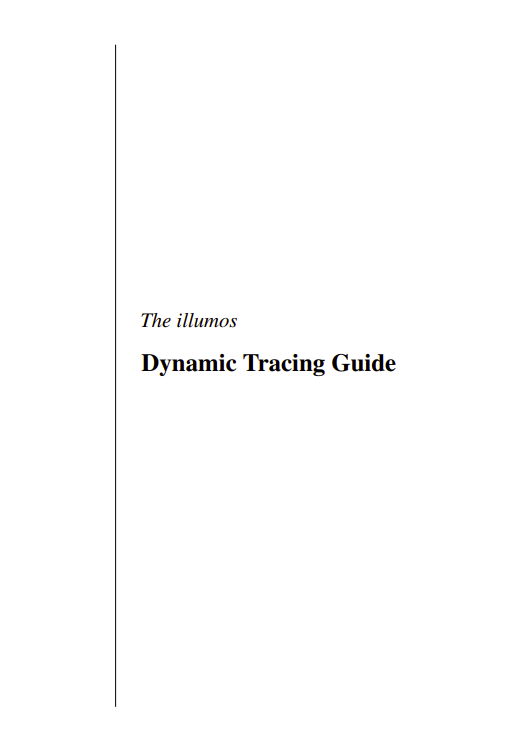DTRACE IS A COMPREHENSIVE dynamic tracing framework for the illumos™ Operating System. DTrace provides a powerful infrastructure to permit administrators, developers, and service personnel to concisely answer arbitrary questions about the behavior of the operating system and user programs. The illumos Dynamic Tracing Guide describes how to use DTrace to observe, debug, and tune system behavior. This book also includes a complete reference for bundled DTrace observability tools and the D programming language.
If you have ever wanted to understand the behavior of your system, DTrace is the tool for you. DTrace is a comprehensive dynamic tracing facility that is built into illumos. The DTrace facility can be used to examine the behavior of user programs. The DTrace facility can also be used to examine the behavior of the operating system. DTrace can be used by system administrators or application developers, and is suitable for use with live production systems. DTrace will allow you to explore your system to understand how it works, track down performance problems across many layers of software, or locate the cause of aberrant behavior. As you’ll see, DTrace lets you create your own custom programs to dynamically instrument the system and provide immediate, concise answers to arbitrary questions you can formulate using the DTrace D programming language.
DTrace allows all illumos users to:
• Dynamically enable and manage thousands of probes
• Dynamically associate logical predicates and actions with probes
• Dynamically manage trace buffers and buffer policies
• Display and examine trace data from the live system or a crash dump
DTrace allows illumos developers and administrators to:
• Implement custom scripts that use the DTrace facility
• Implement layered tools that use DTrace to retrieve trace data
This guide will teach you everything you need to know about using DTrace. Basic familiarity with a programming language such as C or a scripting language such as awk(1) or perl(1) will help you learn DTrace and the D programming language faster, but you need not be an expert in any of these areas. If you have never written a program or script before in any language, the section called “Related Information” provides references to other documents you might find useful.



